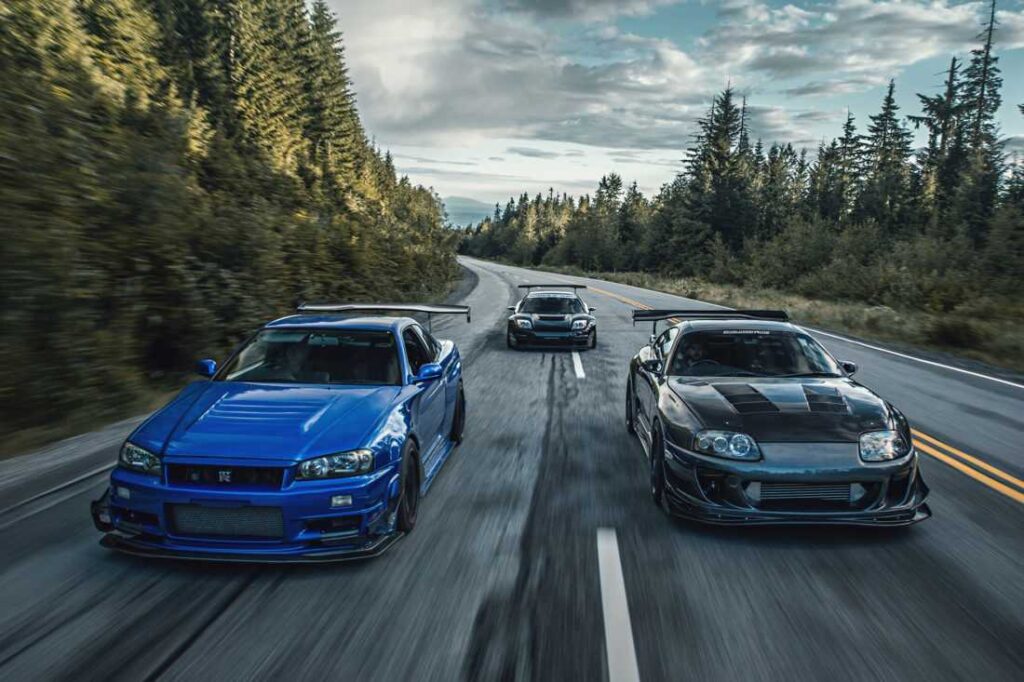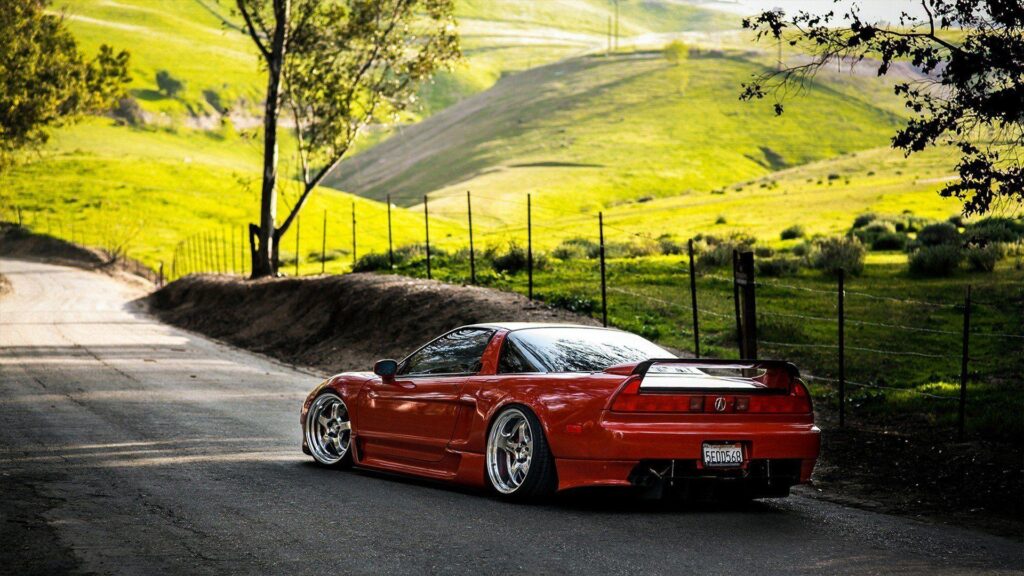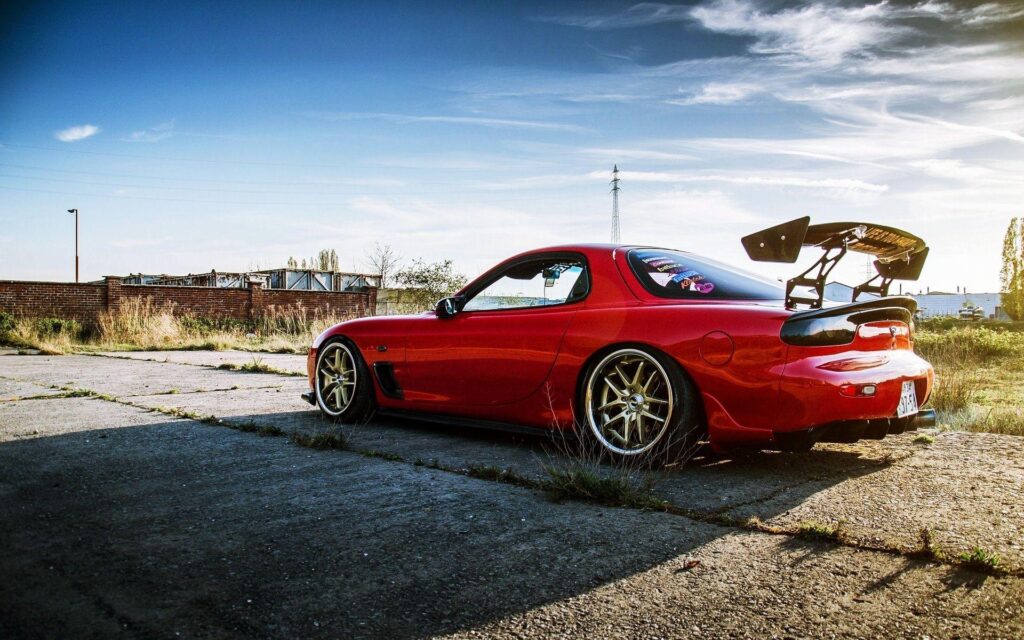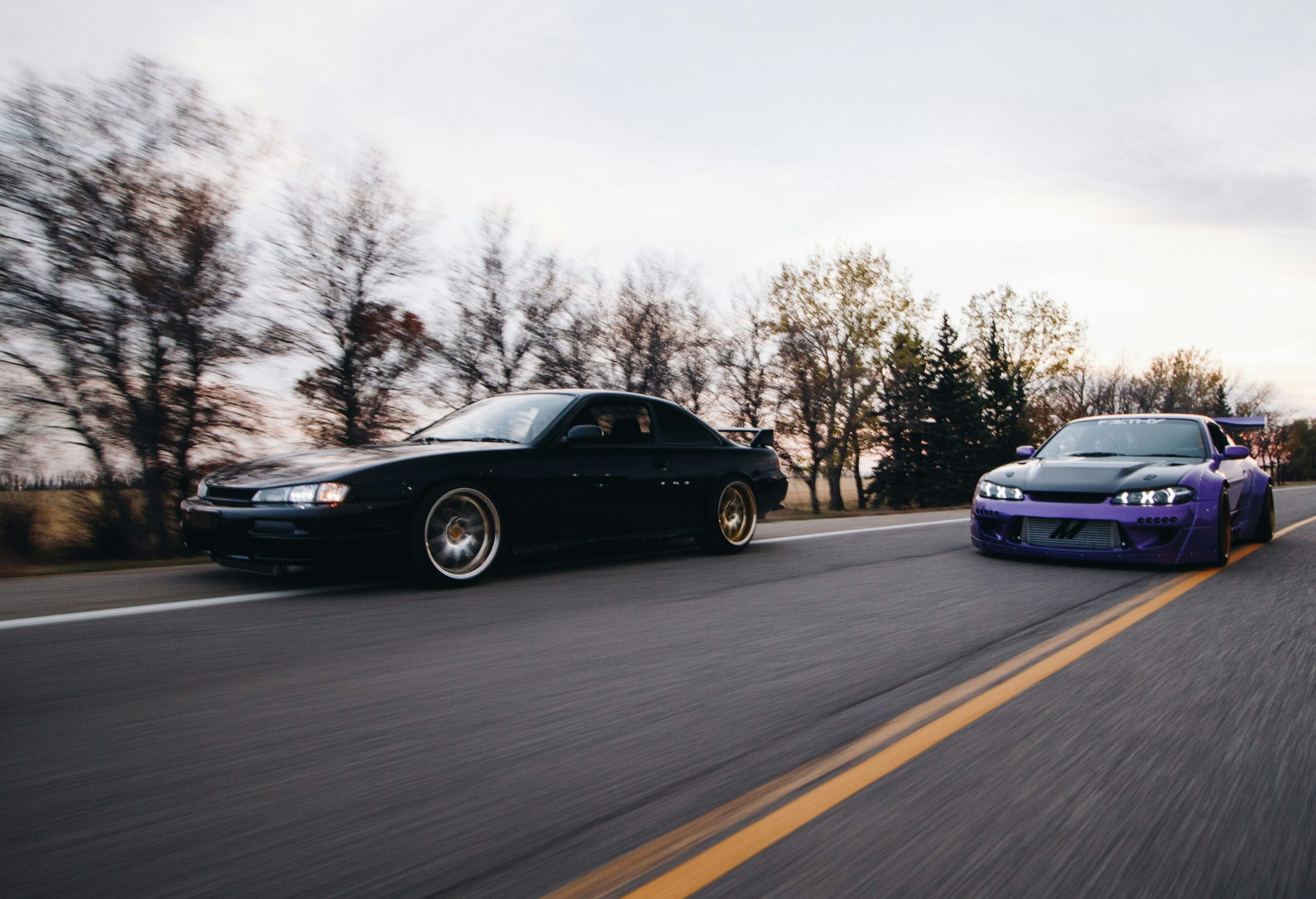Introduction to JDM Legends
Japanese Domestic Market (JDM) cars represent a unique segment of the automotive landscape, showcasing a blend of engineering excellence, innovative design, and a rich cultural heritage. These vehicles are specifically produced for the Japanese market and are often characterized by their performance, reliability, and advanced technology. As the global automotive industry continues to evolve, the allure of JDM legends persists, capturing the hearts of enthusiasts and collectors alike.
One of the defining features of JDM cars is their performance pedigree. Models like the Nissan Skyline GT-R and the Toyota Supra are renowned not just for their speed and acceleration but also for their precision handling and engineering prowess. These vehicles were developed in a competitive environment, where manufacturers aimed to push the boundaries of performance. Consequently, JDM legends often incorporate advanced technologies, such as turbocharging and all-wheel drive, which set them apart from their global counterparts.
Moreover, JDM cars frequently embody a distinctive aesthetic, often characterized by unique styling cues and iconic designs. The cultural significance of these vehicles cannot be overstated; they have become symbols of Japan's rich automotive history. Icons such as the Mazda RX-7 and the Subaru Impreza WRX carry with them legacies of motorsport achievements and innovation, thus cementing their status in the pantheon of automotive legends.
In addition to their performance and design attributes, JDM cars often hold a strong emotional connection with enthusiasts. The community surrounding these vehicles is passionate, with events and gatherings dedicated to celebrating the automotive artistry associated with JDM. As we delve deeper into the world of JDM legends, it will become evident why these cars are not only celebrated for their specifications but also revered for their cultural impact.

The Birth of JDM Culture
The origin of JDM (Japanese Domestic Market) culture can be traced back to the post-war era in Japan, a time marked by significant socio-economic changes. Following World War II, Japan faced the arduous task of rebuilding its economy, which led to an emphasis on industrial growth. The automotive sector emerged as one of the key pillars of this economic revitalization. By the 1960s, Japanese manufacturers began producing vehicles that not only catered to local consumer needs but began to innovate in terms of performance and design.
The economic boom of the 1960s and 1970s resulted in a surge of automotive production, with companies like Toyota, Nissan, and Honda leading the way. These manufacturers focused on creating performance-oriented vehicles that appealed to Japanese car enthusiasts. This period also saw the establishment of competitive motorsports, which helped to cultivate a culture of high-performance automobile appreciation among the Japanese populace. Events like the Nissan Skyline GT-R competitions and the emergence of rallying provided a platform for these automotive brands to showcase their cutting-edge engineering and design prowess.
Moreover, street racing began to flourish in urban areas, particularly among the youth. This underground scene became a significant aspect of JDM culture, as it placed a spotlight on customization and individual expression through vehicles. Car meets and modifications became popular, fueling a community that valued both performance and aesthetics. Iconic models like the Toyota AE86 and the Mazda RX-7 became symbols of this burgeoning movement, seeking to capture the passion of enthusiasts eager to make their mark. The fusion of motorsports and everyday vehicle modifications paved the way for what we now recognize as JDM culture, establishing a legacy that continues to thrive in global automotive spaces.
Iconic JDM Models: A Closer Look
Japanese Domestic Market (JDM) vehicles boast a rich history, with several models achieving legendary status among automotive enthusiasts. One prime example is the Nissan Skyline GT-R, often referred to as the “Godzilla” of the automotive world. Launched in the late 1980s, the R32 Skyline GT-R was powered by a robust RB26DETT engine, a 2.6-liter inline-six that delivered impressive performance. With its advanced ATTESA all-wheel-drive system and the Super-HICAS rear-wheel steering, this model set new standards in handling and traction, making it a formidable competitor on the track and the street.
Another iconic model in the JDM community is the Toyota Supra, specifically the fourth-generation A80 model, which debuted in the 1990s. The Supra featured a 3.0-liter inline-six engine, available in naturally aspirated or turbocharged variants, generating substantial power and acceleration. Its sleek design paired with impressive engineering made the Supra a favorite among tuners and racers alike, solidifying its legacy in automotive culture.
The Honda NSX also deserves mention as a groundbreaking machine. Launched in 1990, the NSX was notable for its mid-engine layout and lightweight aluminum construction, which contributed to its exceptional handling. Powered by a naturally aspirated V6 engine, the NSX was developed with input from Formula One driver Ayrton Senna, exemplifying Honda’s commitment to performance and innovation.

Lastly, the Mazda RX-7, renowned for its rotary engine technology, created a unique driving experience. Its lightweight structure and balanced chassis allowed for precise handling, while the Wankel engine provided a distinct power delivery. The RX-7 is celebrated not only for its performance but also for its cultural impact through motorsport and enthusiast gatherings.

The Influence of JDM on Global Car Culture
Japanese Domestic Market (JDM) vehicles have significantly impacted global car culture since their emergence in the late 20th century. Characterized by unique designs, innovative engineering, and a strong performance ethos, JDM cars have cultivated a passionate following worldwide. This enthusiasm transcends geographical boundaries, fostering a vibrant community of car enthusiasts engaged in the appreciation, modification, and customization of JDM vehicles.
One of the most defining aspects of JDM culture is the widespread trend of tuning and aftermarket modifications. Enthusiasts commonly modify JDM cars to enhance their aesthetic appeal and performance capabilities. This phenomenon was largely fueled by Japanese tuning companies that pioneered advanced modifications, creating a culture wherein individual expression and contribution to the automotive scene are highly valued. As a result, global car enthusiasts adopted these practices, leading to a surge in customized builds that echo the spirit of JDM innovation.
The influence of JDM styling is also evident in the designs and production strategies of automobile manufacturers worldwide. Elements such as aggressive body kits, lowered stances, and attention to aerodynamics are now integral features of many vehicles produced outside of Japan, thereby reshaping trends in the automotive industry. Furthermore, JDM-inspired cars increasingly find their way into mainstream markets, further entwining Japanese aesthetics with the broader global automotive landscape.
The growth of the JDM community outside of Japan has fostered international collaborations and events showcasing JDM vehicles. The car meets, races and online forums facilitate discussions, sparking interests that draw in new enthusiasts while further strengthening existing bonds within the community. This exchange of ideas and experiences highlights how JDM culture has woven itself into the fabric of global automotive passions, enriching it with Japanese engineering's creativity and flair.
The Role of Motorsports in JDM Legends
Motorsports have played a pivotal role in shaping the identity and evolution of Japanese Domestic Market (JDM) vehicles. The symbiotic relationship between competitive racing and automotive innovation has propelled many JDM legends into the global spotlight, underscoring their technological advancements and performance capabilities. Events like the Super GT, D1 Grand Prix, and various rally competitions have significantly influenced the development of high-performance Japanese cars.
The Super GT series exemplifies the intersection of commercial interest and technical prowess. Renowned for its diverse field that includes brands such as Nissan, Toyota, and Honda, the Super GT pushes manufacturers to continually refine their designs and engineering. The competition serves as a testing ground for advanced technologies, which eventually trickle down to consumer models, enhancing the overall driving experience of JDM enthusiasts. The emphasis on aerodynamics, suspension tuning, and engine performance observed in this series has become synonymous with JDM excellence.
Similarly, the D1 Grand Prix has catalyzed the popularity of drifting, a motorsport discipline that accentuates car handling and control. This trend has led manufacturers to produce vehicles that cater specifically to performance driving, integrating features aimed at enhancing drift stability and responsiveness. As enthusiasts sought to replicate the thrilling aspects of D1 in their own cars, the market for tuned JDM vehicles surged, further solidifying the bond between motorsports and consumer demand.
Rally competitions have also left an indelible mark on JDM legends, particularly with the remarkable legacy of the Subaru Impreza and Mitsubishi Lancer Evolution. These vehicles, engineered for rigorous rally stages, highlighted the importance of all-wheel drive and turbocharging, driving innovations that expanded the capabilities of JDM vehicles in all conditions. Each victory in the rally sphere elevated these models to iconic status, demonstrating how motorsports not only foster performance improvements but also create a robust culture of automotive enthusiasts eager to embrace Japanese engineering.
Collectibility and Market Value of JDM Legends
The world of Japanese Domestic Market (JDM) cars has experienced a notable transformation in recent years, spearheading a surge in collectibility and market value. As enthusiasts become increasingly aware of the performance and design that these vehicles offer, the demand for JDM legends has escalated. Cars such as the Nissan Skyline GT-R, Toyota Supra, and Honda NSX have gained iconic status, often fetching impressive prices at auctions and private sales. One of the primary factors driving this collectibility is rarity; many JDM models were produced in limited numbers and are no longer manufactured, making them highly sought after by collectors and automotive aficionados alike.
Performance pedigree plays a crucial role in establishing the desirability of these vehicles. Many JDM legends are equipped with advanced engineering, sophisticated technology, and sporting heritage, showcasing the exemplary craftsmanship of Japanese manufacturers. For instance, vehicles that participated in motorsport events or broke performance records often hold a special place in collectors' hearts, significantly enhancing their market value. These performance credentials not only contribute to the car's status but also create communities around them, with enthusiasts keen to own a piece of automotive history.
Another contributing factor is the nostalgia associated with these iconic models. For many collectors, these cars represent a significant aspect of their youth or teenage years, offering a personal connection that transcends mere ownership. This emotional attachment often amplifies the valuation of JDM legends. As market trends continue to evolve, auctions have become pivotal in establishing benchmark prices for these vehicles, with sales increasingly publicized across various platforms, attracting a broader audience. Understanding these dynamics is essential for anyone interested in the collectibility and market value of JDM cars, ensuring awareness about why these vehicles are seen not only as cars but also as valuable assets in the collector’s marketplace.
Maintaining and Restoring JDM Legends
Maintaining and restoring Japanese Domestic Market (JDM) legends poses unique challenges, primarily due to the age and rarity of these vehicles. Classic JDM cars, such as the Nissan Skyline, Toyota AE86, and Honda NSX, often require significant care to ensure both performance and authenticity are preserved. Owners must be prepared to navigate common issues such as rust, outdated components, and, in some cases, the consequences of previous modifications that stray from factory specifications.
One of the foremost considerations in restoring a JDM vehicle is sourcing authentic parts. Due to the specialized nature of these cars, many components may no longer be produced. This scarcity can lead to difficulties in finding reliable suppliers for parts that meet OEM (Original Equipment Manufacturer) standards. Enthusiasts are encouraged to connect with dedicated online communities and forums, where seasoned restorers often share leads on reputable parts suppliers and even aftermarket alternatives that respect the original design and function of the vehicle.
Another important aspect is understanding the importance of comprehensive maintenance. Classic JDM cars may lack modern technological advancements, which makes regular checks and a meticulous maintenance schedule crucial. Experts recommend performing routine inspections of critical systems including the engine, transmission, and suspension to identify wear and tear. A documented maintenance history not only aids in maintaining performance but also enhances the vehicle's value over time.
Ultimately, passion drives the restoration of JDM legends. Engaging with a community of fellow car enthusiasts can provide both support and valuable insights, making the journey of restoring these iconic vehicles more enjoyable. In conclusion, while the endeavor may be challenging, the reward of keeping these masterpieces on the road is undoubtedly worth the effort.
The Future of JDM Cars: Trends and Innovations
The landscape of Japanese Domestic Market (JDM) cars is undergoing a significant transformation, driven largely by consumer demand for sustainability and innovation. One of the most notable trends is the rise of electric vehicles (EVs), which are becoming increasingly prominent in the JDM scene. Leading manufacturers such as Nissan and Toyota are investing heavily in electric platforms, aiming to combine performance with eco-friendly technology. This shift is especially pertinent given the global push towards reducing carbon emissions, prompting JDM manufacturers to shift focus while still attempting to uphold their performance-oriented heritage.
Accompanying the rise of electric vehicles is the advancement of hybrid technology in high-performance cars. Automotive companies are exploring how to incorporate hybrid systems without compromising speed and driving pleasure, which are hallmarks of traditional JDM cars. For instance, models like the Honda NSX utilize hybrid technology to boost performance metrics while maintaining lower emissions. This innovative approach not only meets regulatory demands but also caters to a growing segment of environmentally conscious consumers who still seek the thrill that JDM vehicles are known for.
The evolution of automotive regulations also plays a crucial role in shaping the future of JDM cars. Stricter emission standards and safety requirements are compelling manufacturers to re-engineer their traditional models, making way for vehicles that resonate with modern values while ensuring compliance with emerging global regulations. Companies are leveraging advancements in automotive technology to reassess their design philosophies, focusing on high performance within a framework of environmental responsibility.
As JDM manufacturers navigate these transformative trends, the challenge remains to blend innovation with their storied legacy of performance. By integrating cutting-edge technology, they can ensure their relevance while catering to a new generation of car enthusiasts who appreciate both performance and sustainability.
Conclusion: Celebrating JDM Legends
As we have explored the rich history and cultural significance of Japanese Domestic Market (JDM) vehicles, it becomes evident that these remarkable machines occupy a unique place in the hearts of automotive enthusiasts worldwide. The allure of JDM legends lies not only in their performance and design but also in the stories they carry, representing an era of innovation and passion within the automotive industry. From the iconic Toyota Supra to the legendary Nissan Skyline, each vehicle embodies the essence of Japanese craftsmanship and engineering prowess.
The impact of JDM cars transcends mere transportation; they have become symbols of a lifestyle and a community. The modifications and personalization associated with these vehicles have fostered a vibrant subculture where enthusiasts share their knowledge and experiences. Moreover, the rich heritage of these cars continues to influence modern automotive design, ensuring that the spirit of JDM remains a driving force in shaping future generations of vehicles. Preserving the legacy of JDM legends is essential not only for collectors and aficionados but also for those who appreciate the artistry and engineering excellence that these vehicles represent.
As we celebrate the captivating stories woven into the fabric of JDM automotive history, we invite readers to reflect on their own experiences with these vehicles. Whether you own a classic JDM model or simply admire the craftsmanship from afar, your insights and stories add depth to this passionate community. Engaging in discussions about JDM cars allows us to honor their legacy while connecting with fellow enthusiasts. In conclusion, JDM legends are more than just cars; they are a testament to the creativity, dedication, and passion of those who have embraced them throughout the years. Share your thoughts and experiences, and let us continue to celebrate the unforgettable journey of JDM legends together.
